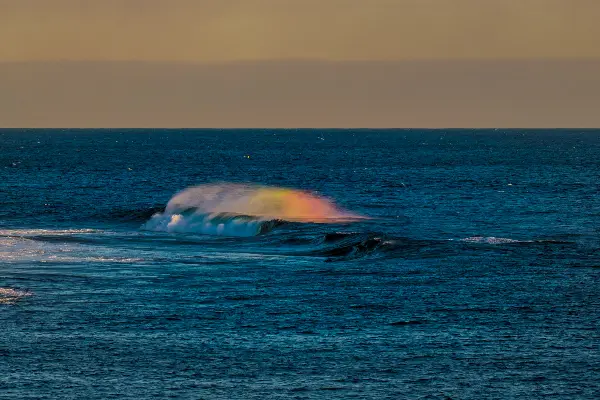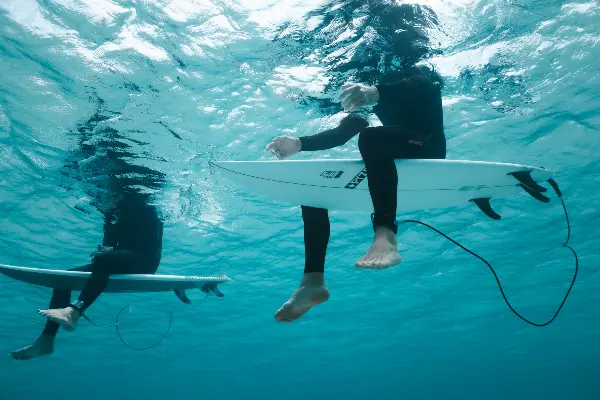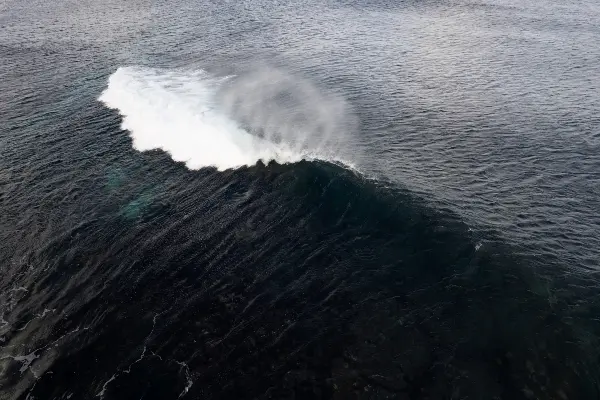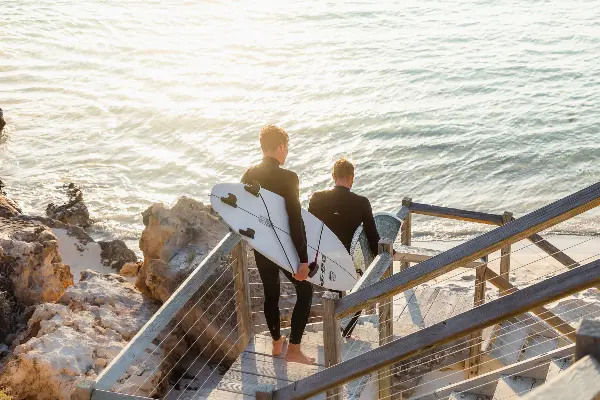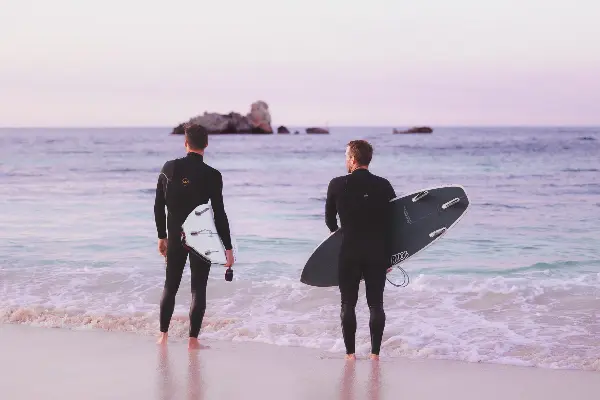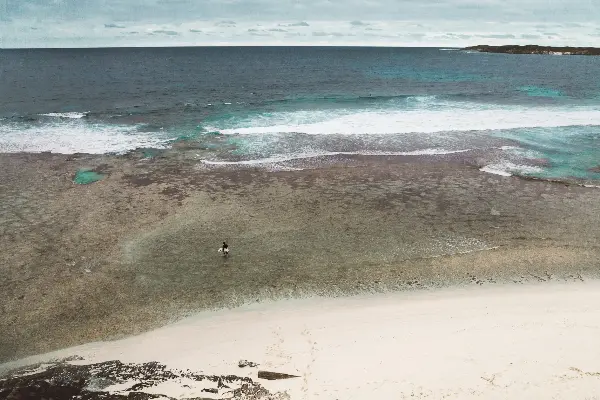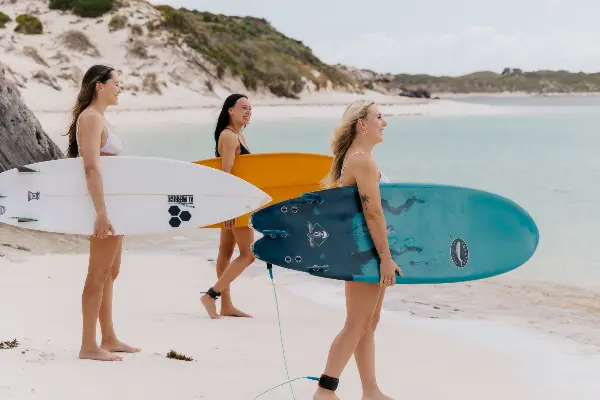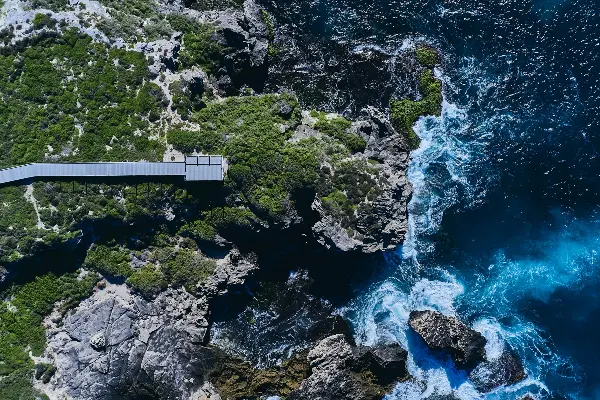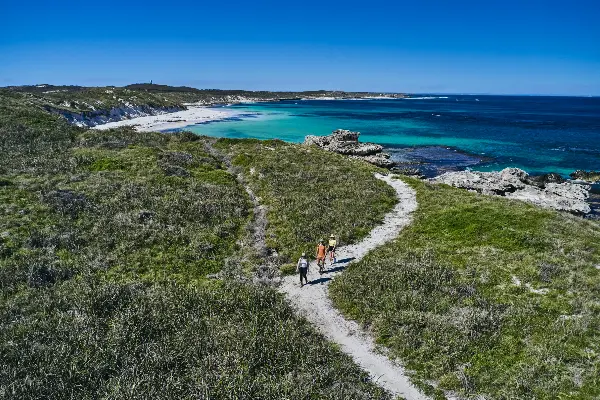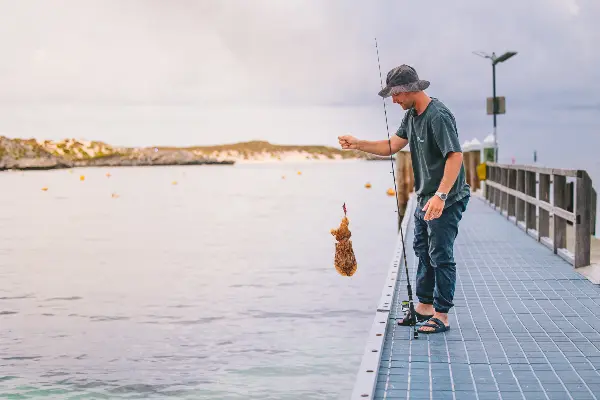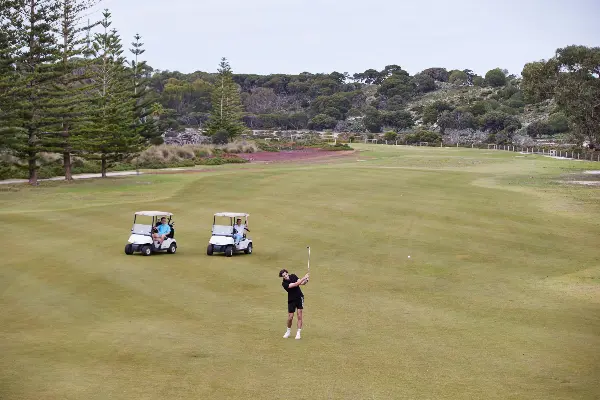Wadjemup / Rottnest Island isn’t the place for a quick surf, it’s an adventure. An all-encompassing experience that starts with the journey from the mainland. There are hidden, carefully guarded local spots, waves that test your mettle, and epic surf that makes you work for its discovery.
And when you’re out there, taking a breather and simply floating atop the dappled blueness, looking back towards the silhouette of the island… It’s a new kind of decompression.
An island of swell from every direction
Although the sweeping beaches of Perth are ideal for a Sunday afternoon of sunbathing and cooling dips, when it comes to surf, they don’t always hold up. Locals will often find themselves heading home early for a victory-less lunch, drowning sorrows of still waters and aching arms. Unreliability is the bane of any surfer. And that’s where you need an island.
Wadjemup’s multiple swell directions and strong conditions create a haven for gold-standard surf. There’s always an area that’s offshore. With the south side producing consistently impressive waves, the north side changing with the seasons, and raw, wild conditions finding their home at West End.
All of the breaks on the island are reef breaks, generating powerful waves that form offshore and carry their riders across the open ocean’s surface, far longer than any beach break.
There are waves on the island that rival the quality and power of waves down in the South West around Margaret River. — Surfing WA
Thrilling rides: waves for the experienced surfers
As a stop on the 2021 World Surf League Championship Tour, Rottnest Island produces surf worthy of world-renowned professionals. It’s not only the intensity of the surf that makes Wadjemup most suited to experienced surfers, but also the remote locations and tiring paddle time, which mean you need to know what you’re doing.
If you’re seeking a challenging wave or a unique experience, then here are some places to hit:
Strickland Bay: The spot used for international, national, and state-level surfing events. It’s a thrilling break, with a solid left and even right-handers when the conditions are suitable. As the bay has a reputation, it may be busier than other places.
Where is it? Strickland Bay is located on the southern side of the thin bridge of land leading over to West End, making it one of the furthest spots from the settlement. The bus stop is a fair hike away from the bay, 750 metres along a sandy track.
Stark Bay: Another place for serious swell. It’s an exposed reef break, offering pretty consistent waves and a quiet, lesser known location.
Where is it? Stark Bay is on the opposite side of the island to Strickland, but has a bus stop right at the beach.
West End: The location of the Rotto Box, a gnarly wave created by a heavy reef break that holds strong swells. Surfers have to be towed into the wave, as it’s not safe to paddle out.
Where is it? West End is at the far, opposite end of the island to Thomson Bay — even though there’s a bus stop, the surf is only accessible by boat.
Softer surf: breaks for beginners
Everything that makes Wadjemup an impressive place to surf also makes it risky for new surfers. Most of the breaks on the island are too challenging for beginners, not just because of the waves themselves, but also the isolation of the spots — if inexperienced surfers come unstuck, they’re a long way from Thomson Bay.
Luckily, there are a couple of places with softer waves that still pose a challenge, but not a hazardous one. Out towards the western tip of the island, just before Strickland Bay, is Mary Cove — a calmer spot with a steady left break, similar to Strickland Bay, but a lot more forgiving. Another accessible break is Chicken Reef, which can be found near Salmon Bay. This exposed reef break receives distant groundswells and offshore winds from the north and north-east, and is known for its consistent, clean winter waves. With both locations, check the weather to ensure the surf is accessible for your abilities before heading out.
Accessing the surf
If you come via the ferry and must find your way to the surf breaks by land, then there’s a chance to interact with the beauty of the island wilderness as well as the ocean. Most of the worthwhile breaks require a hike through the bush or shrubland from the nearest bus stop — an opportunity to work up a sweat, observe stunning vistas along the coastline, and take in the surrounding flora.
Accessible by land:
- Strickland Bay
- Stark Bay
- Chicken Reef
- Mary Cove
- Fairbridge Bluff
If you’re able to make the trip on a private boat, every bay is a possibility. For the breaks further offshore, a boat makes it easy to retain energy and put your full strength into an invigorating ride. The more challenging breaks are opened up to you, and you can easily pop back to Thomson Bay for a rest and a feed afterwards.
Requires a boat:
- West End
- Bullet Reef
- Radar Reef
Planning your surfing getaway on Wadjemup
When to go
Surfing on Wadjemup is predominantly an off-season activity, as it’s during autumn and winter that the largest swells come rolling through. Winter mornings on the island see beautiful, light conditions, with barely a breath of wind. And when you visit Wadjemup during this peak surfing season, it’s quieter too. The wildlife is awake, the bush is vibrant, and you’ll find real peaceful moments.
If it’s possible to stay overnight or visit by boat, then you can arrive at the best time of day for surfing on the island. The rule is: the earlier the better. 6 am is perfect for summer days, but the sun will rise later in the winter, so it’ll be more like 7 or 8 am — that’s when you want to arrive. But don’t start when it’s still dark, it’s not safe to roam the wilderness areas when you can’t see where you’re going!
And if you can only come for a day trip, make sure you’re on that first morning ferry and plan ahead so you know which beach you’re heading for.
Hiring equipment
Although you can’t hire a surfboard on the island, you can get everything else you need. Just head to Pedal & Flipper Hire for a wetsuit, bike (or electric bike), and surfboard rack.
While you’re shopping, it’s also a good idea to stock up for your day. There aren’t many fresh water sources once you leave the settlement, so bring plenty of bottled water. If it’s summer, you’ll definitely need a hat and sunscreen, and bring a raincoat on any milder days — the weather can change quickly.
Finding your surf spot
As you know, surfing is about adaptability; the weather is always changing and sometimes you need to plan on-the-go. So, when you get to the island, assess the situation on the day (or the night before). Don’t worry if the winds are onshore wherever you are, as on the other side of the island the conditions will be clean and offshore. Use this understanding — and the knowledge of which surf breaks are within your abilities — to pick your spot.
If you’re unsure what the weather is telling you, then you can always talk to a local. Many of the people who work on the island are surfers, like the rangers, and they know how the island operates. They may guard some local secrets, but are sure to send you in the direction of some solid surf — and away from any dangerous weather.
Staying overnight
An overnight stay is an opportunity to sink into the island rhythm. So, when you wake, early on the morning of your first surf, the stresses of the mainland have already slipped away.
Staying overnight — whether it’s on a boat or on the island — also means you can easily head to one of the nearby venues for celebratory after-surf pints and hearty pub meals, without any time restrictions from the ferry.
Waves that bring connection to all that is here
It’s not just the surf itself that makes catching a wave on Wadjemup so special. It’s the craggy headlands and undulating landscape visible around the lip of the wave. And it’s the wildlife — the marine sanctuaries in the waters beneath you, teeming with tropical fish.
I remember surfing many, many times on Rottnest Island when big schools of dolphins would swim under me or I'd see big schools of fish — Surfing WA.
The isolation of an island surf brings a sense of peace not found on the mainland. Surfing on Wadjemup is a way to connect with the land and the water, and all that is here. While catching some pretty amazing waves too.
Tips for a time well spent
Make your visit even more meaningful with helpful advice from those in the know.
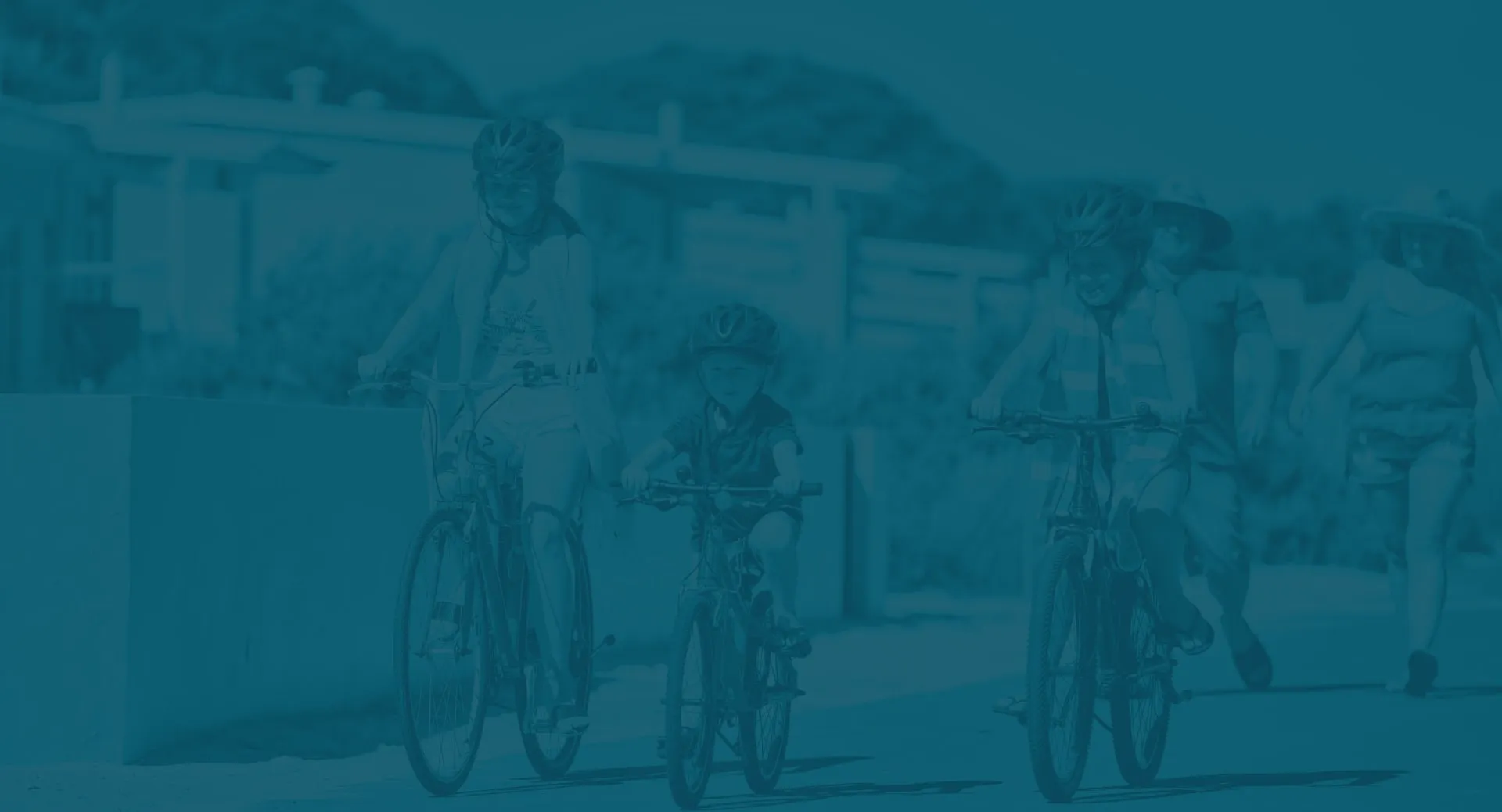

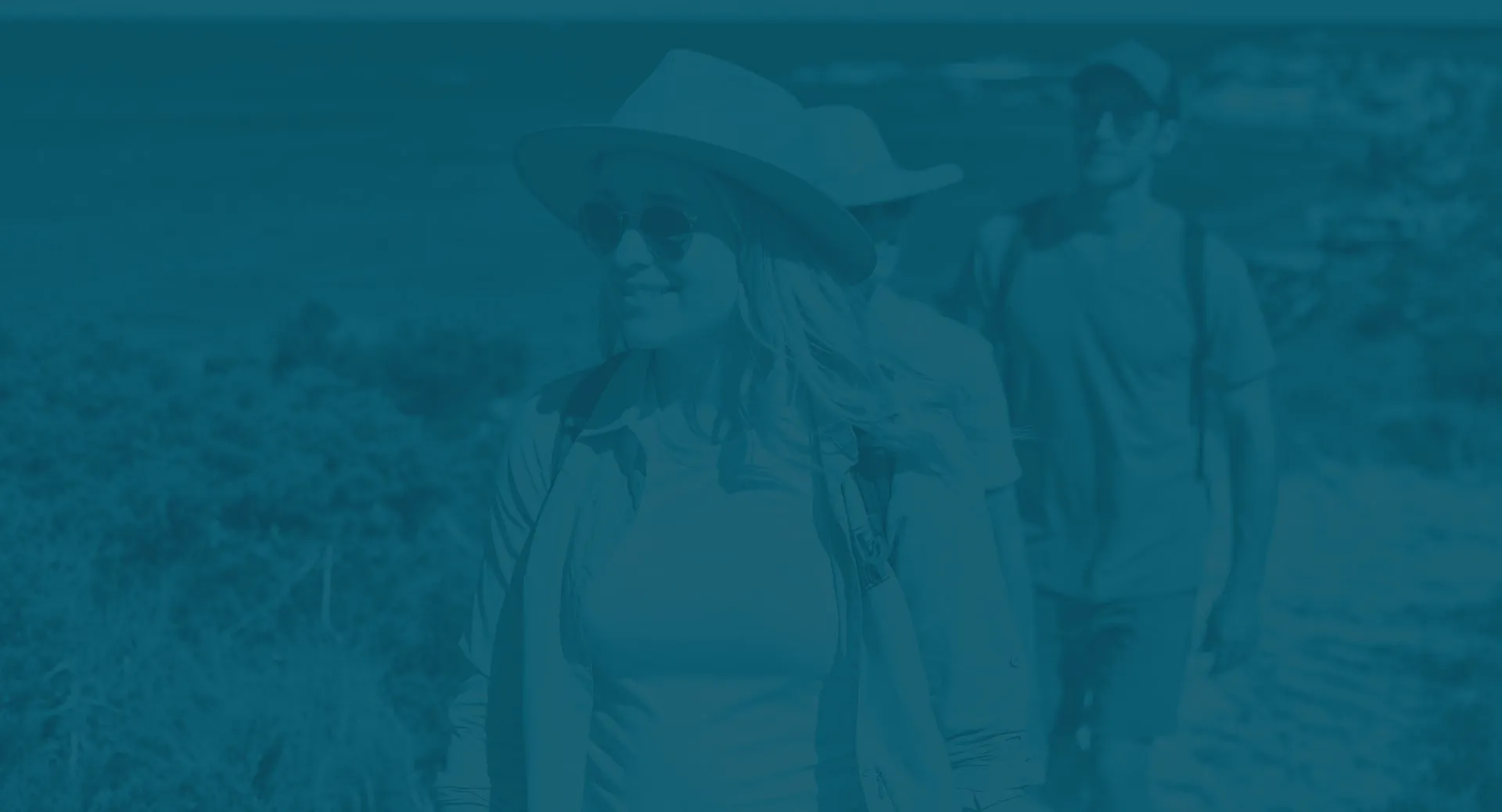
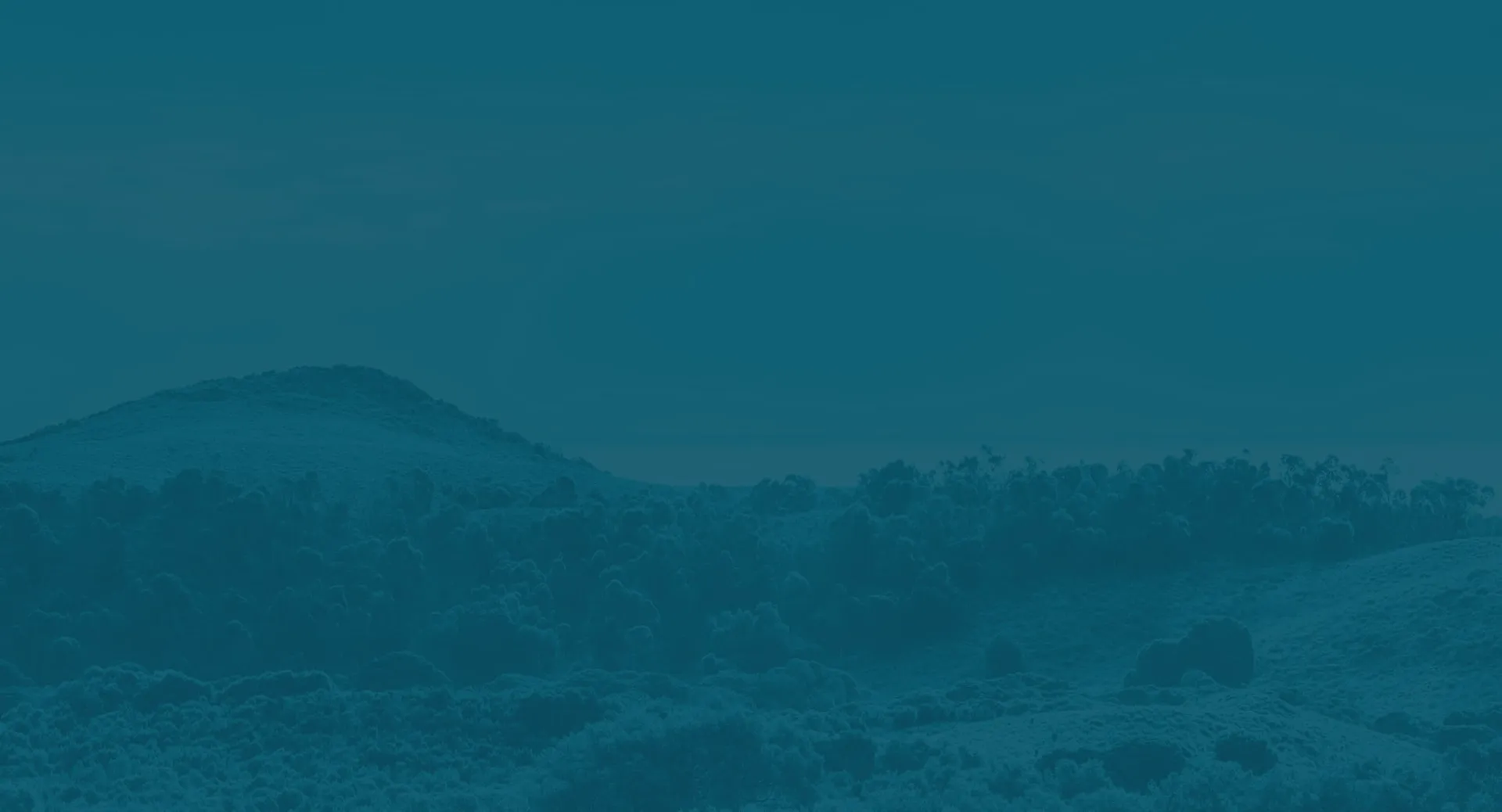

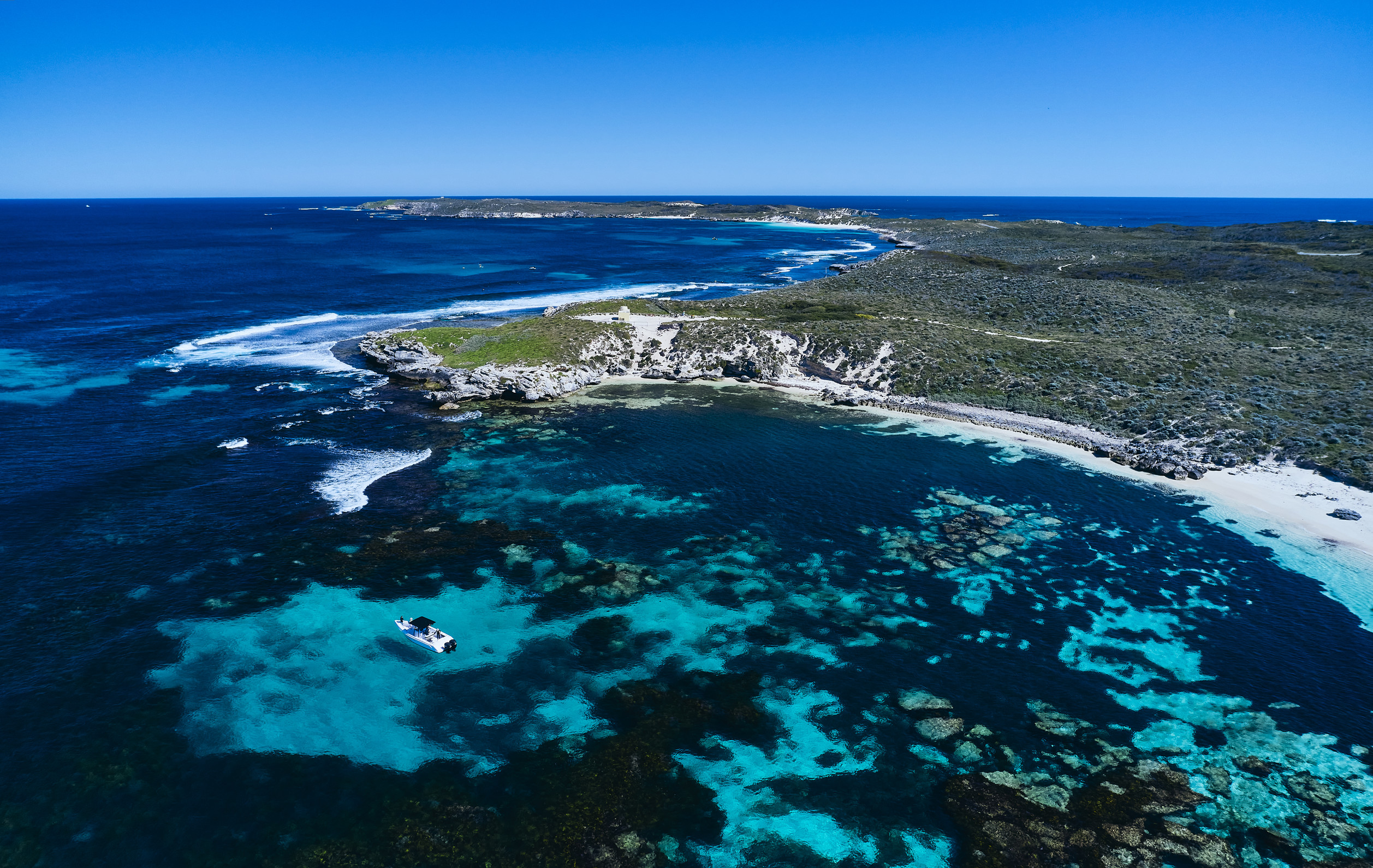
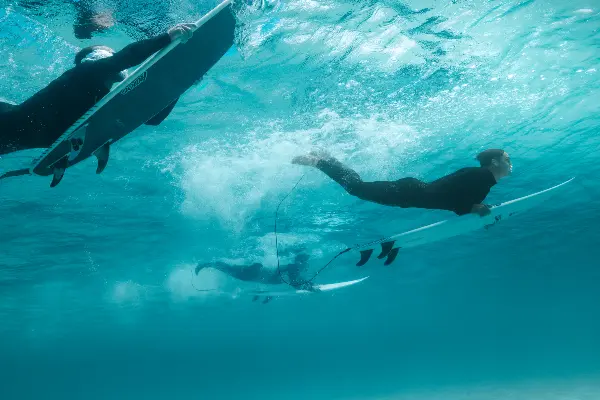
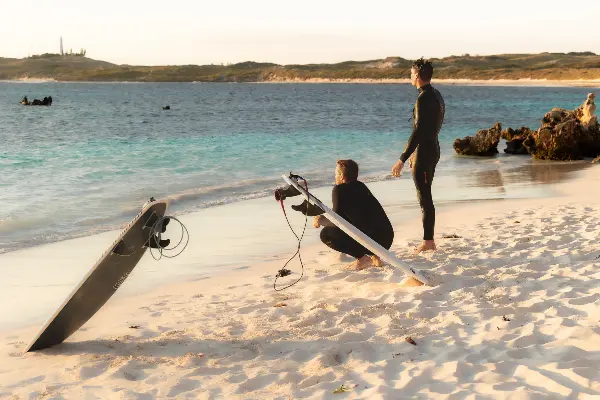
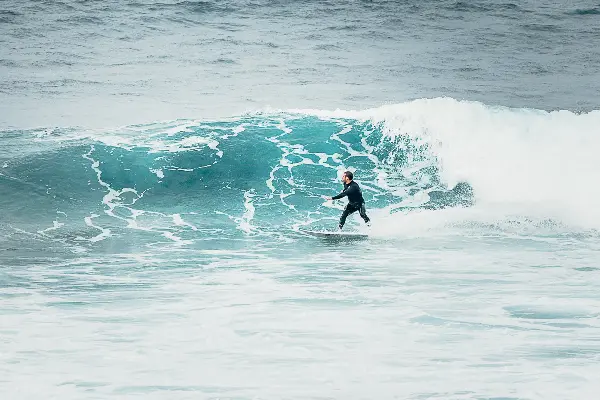
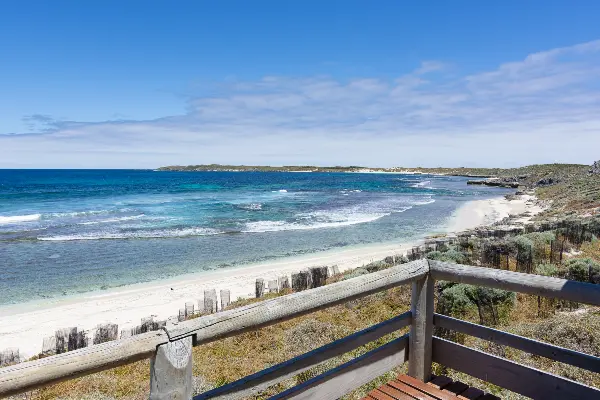
.tmb-fallback.webp?Culture=en&sfvrsn=9ba9e564_1)
